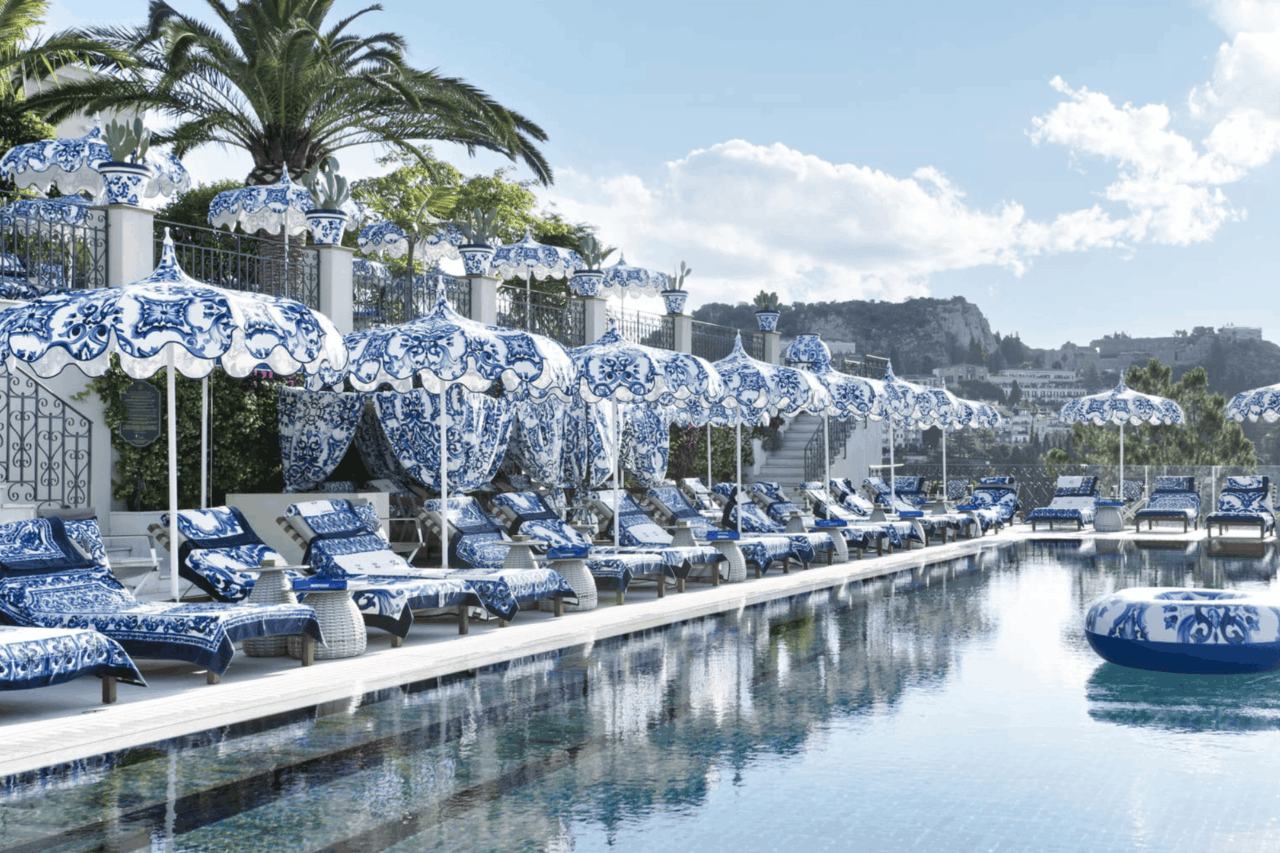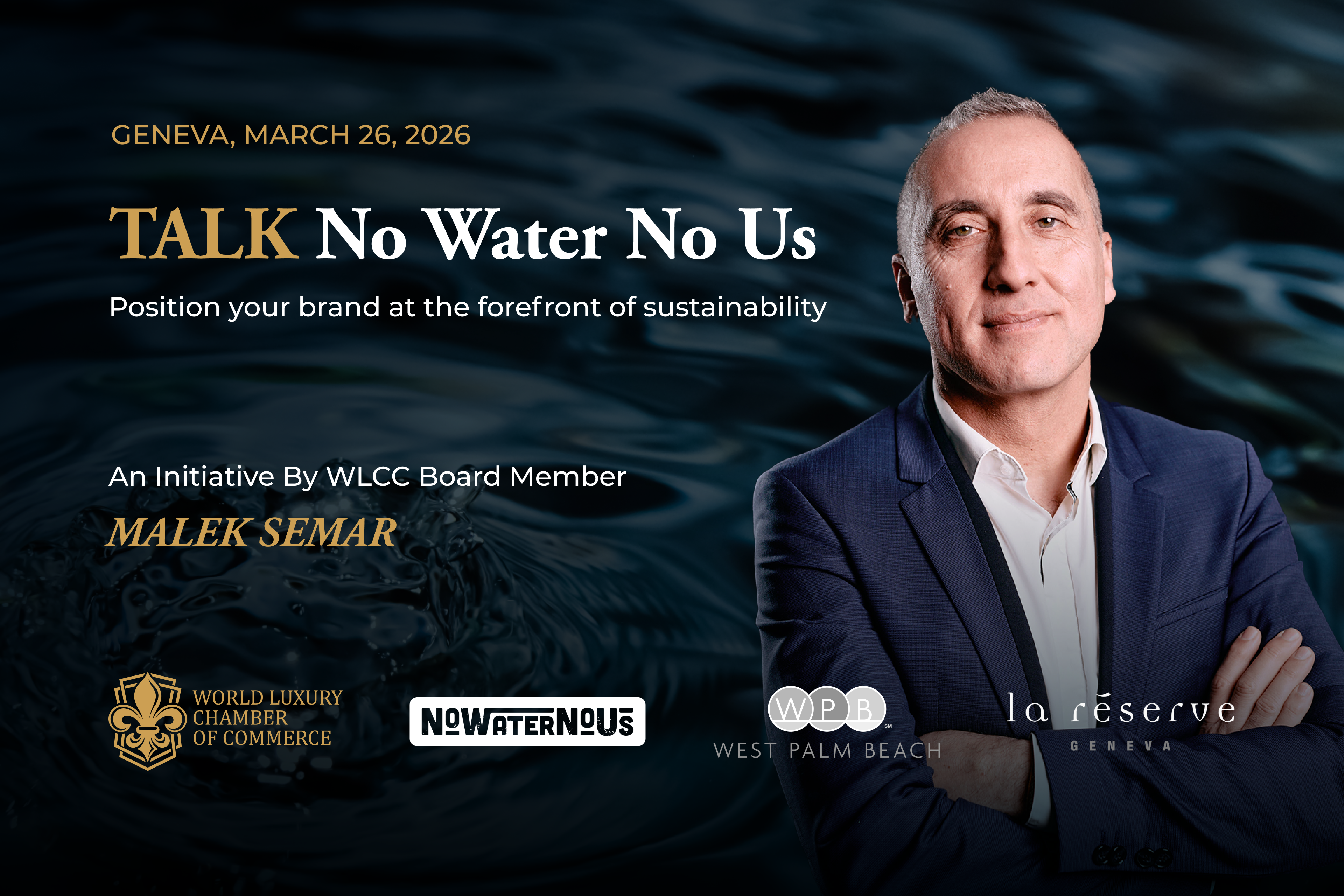Above: Dolce & Gabbana boutique pop-up at the Four Seasons Hotel in San Domenico Palace, Taormina
At a sun-soaked resort in Sicily, a towel isn’t just for drying off; it’s a €559 Dolce & Gabbana showpiece. Welcome to a growing trend reshaping high-end travel: fashion houses are setting up limited-run activations at some of Europe’s most exclusive hotels.
From Dior-branded buoys floating off Capri to bold Missoni stripes stretching across pool decks in Ibiza and Mykonos, these high-fashion pop-ups are transforming seasonal hospitality into visually charged experiences. They’re designed to captivate guests, generate buzz, and spark a flood of social media posts. For brands, it’s a strategic way to reach affluent travelers; for hotels, it’s a way to offer something fleeting, exciting, and undeniably share-worthy.
Luxury hotels across Europe are partnering with major fashion houses to create immersive seasonal pop-ups, transforming their spaces into visually striking branded experiences. From Dolce & Gabbana-themed pool decks in Sicily to Missoni-patterned beach clubs in Mykonos, these short-term installations are designed to capture attention, both in person and on social media. The offerings range from custom sunbeds and branded cocktails to exclusive fashion items available only to hotel guests.
These collaborations come at a time when luxury retail is slowing down, but high-end travel continues to thrive. Fashion brands gain access to a wealthy, travel-savvy audience, while hotels benefit from increased bookings and media buzz. Especially younger generations are drawn to one-of-a-kind experiences that feel both aspirational and “Instagram-worthy.” Hotels like Puente Romano Marbella and the Newt in Somerset have already seen notable returns from previous pop-up activations.
However, not all properties are being acquired through loud takeovers. Some are choosing more understated integrations to maintain their brand identity and guest focus. Hoteliers are wary of appearing too commercial or dependent on external labels, and some, like Rosewood in Riviera Maya, aim to highlight local artisans alongside fashion partnerships. Ultimately, the trend reveals a strategic pivot: in a shifting luxury landscape, the destination is becoming the showroom
Main Takeaways:
- Luxury hotels and fashion brands are teaming up to attract high-spending travelers.
- Pop-ups offer exclusive, short-term experiences that boost visibility and revenue.
- Social media drives demand, especially among Gen Z and affluent guests.
- Hospitality is growing, while retail is slowing, making travel a prime branding opportunity.
- Subtle execution matters to avoid brand misalignment or guest fatigue.
Fashion-meets-hospitality partnerships are proving to be one of the savviest strategies in luxury today. In an era where Instagram likes can drive travel decisions and exclusivity remains a powerful currency, these branded takeovers deliver on both.
Stay up to date on the latest luxury industry news: https://worldluxurychamber.com/insights-news
SOURCES: THE BOF





